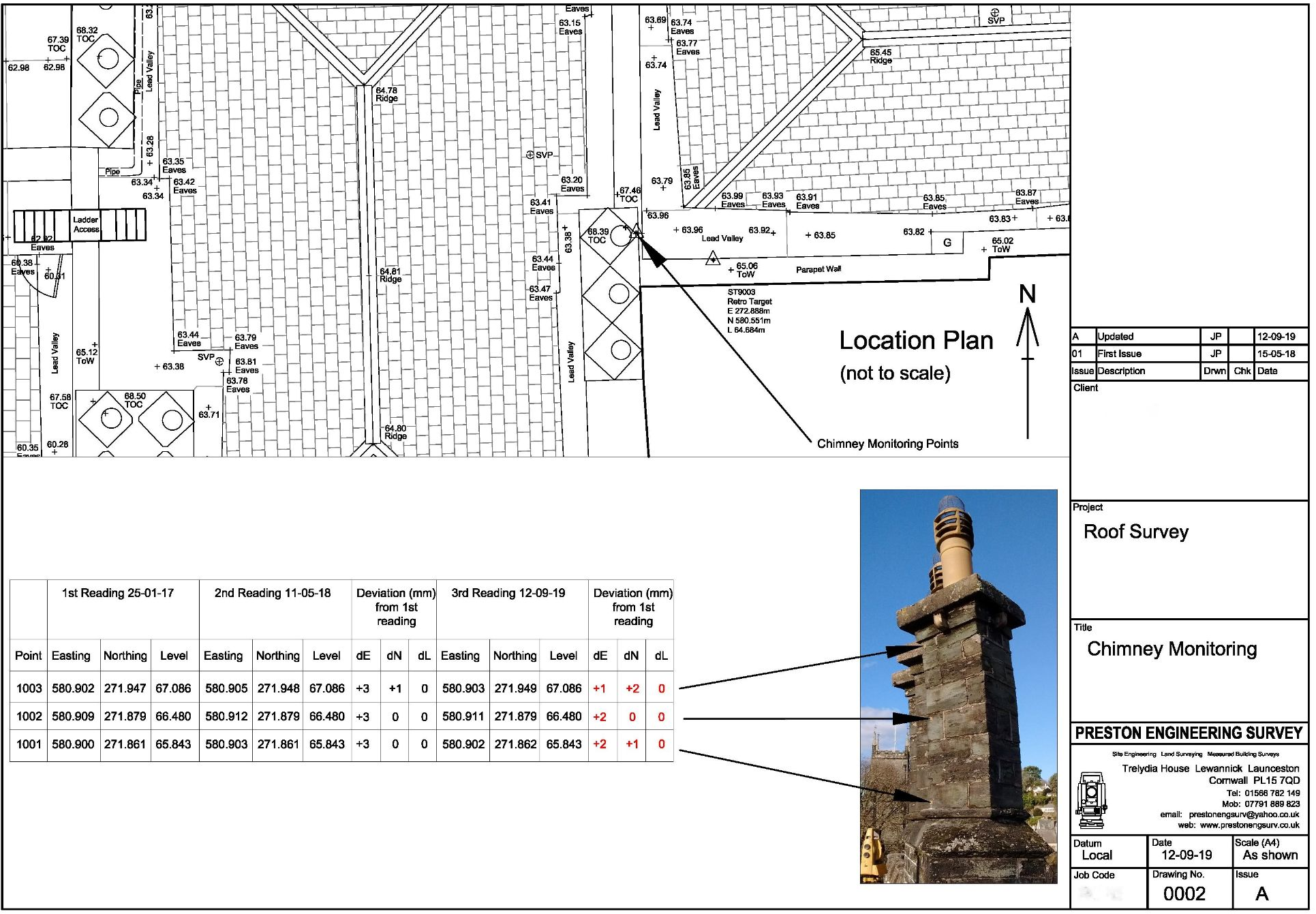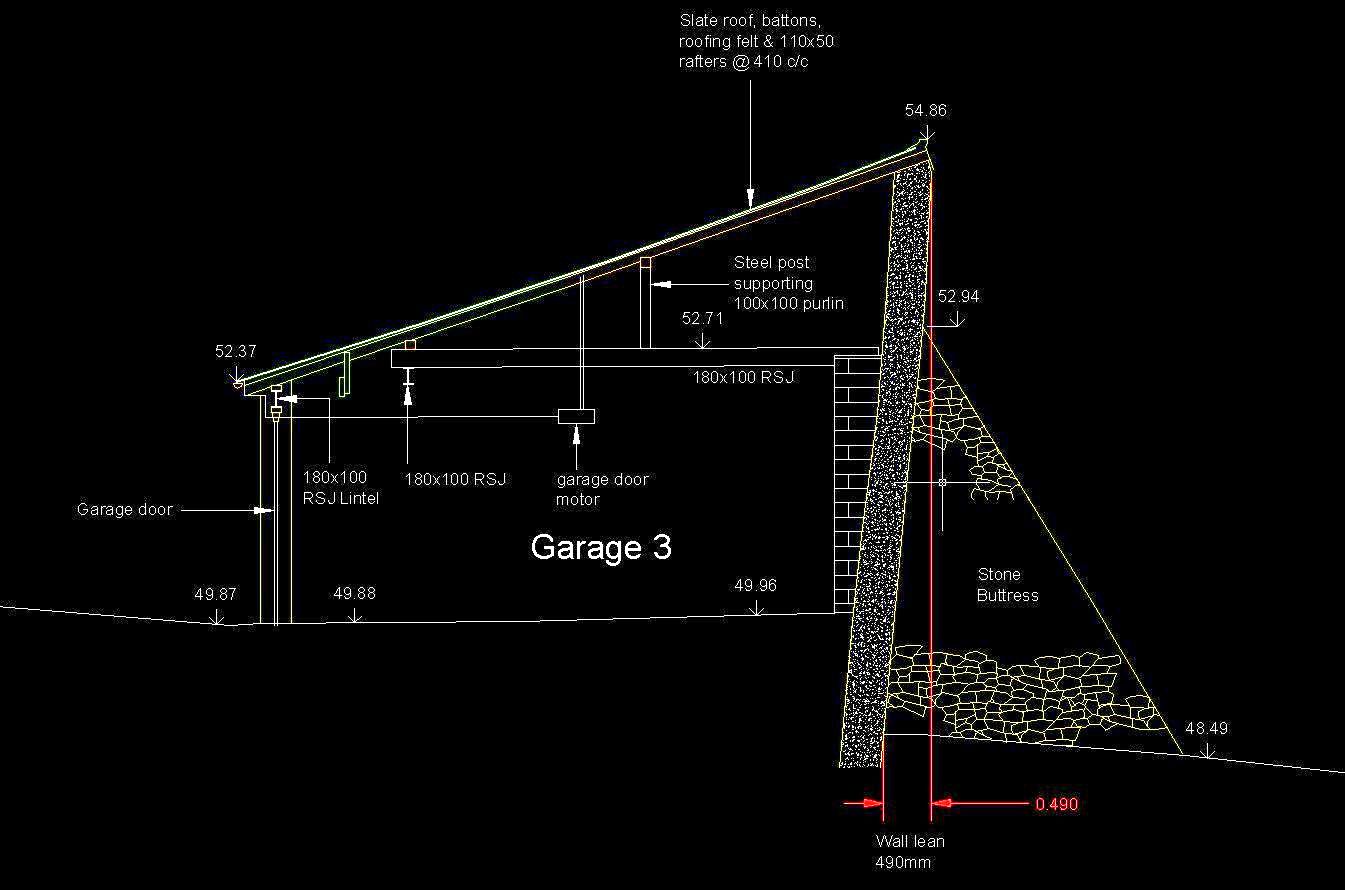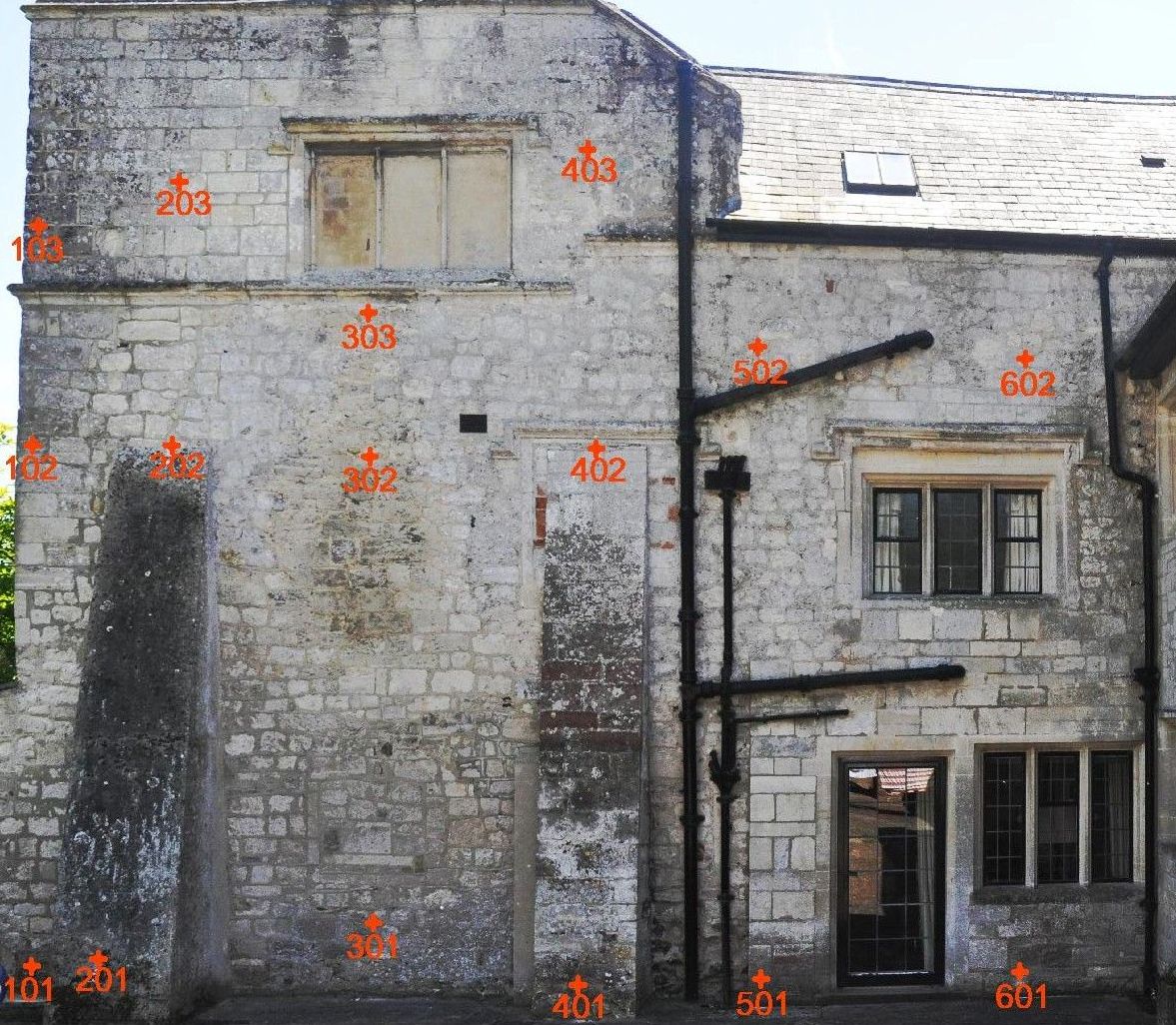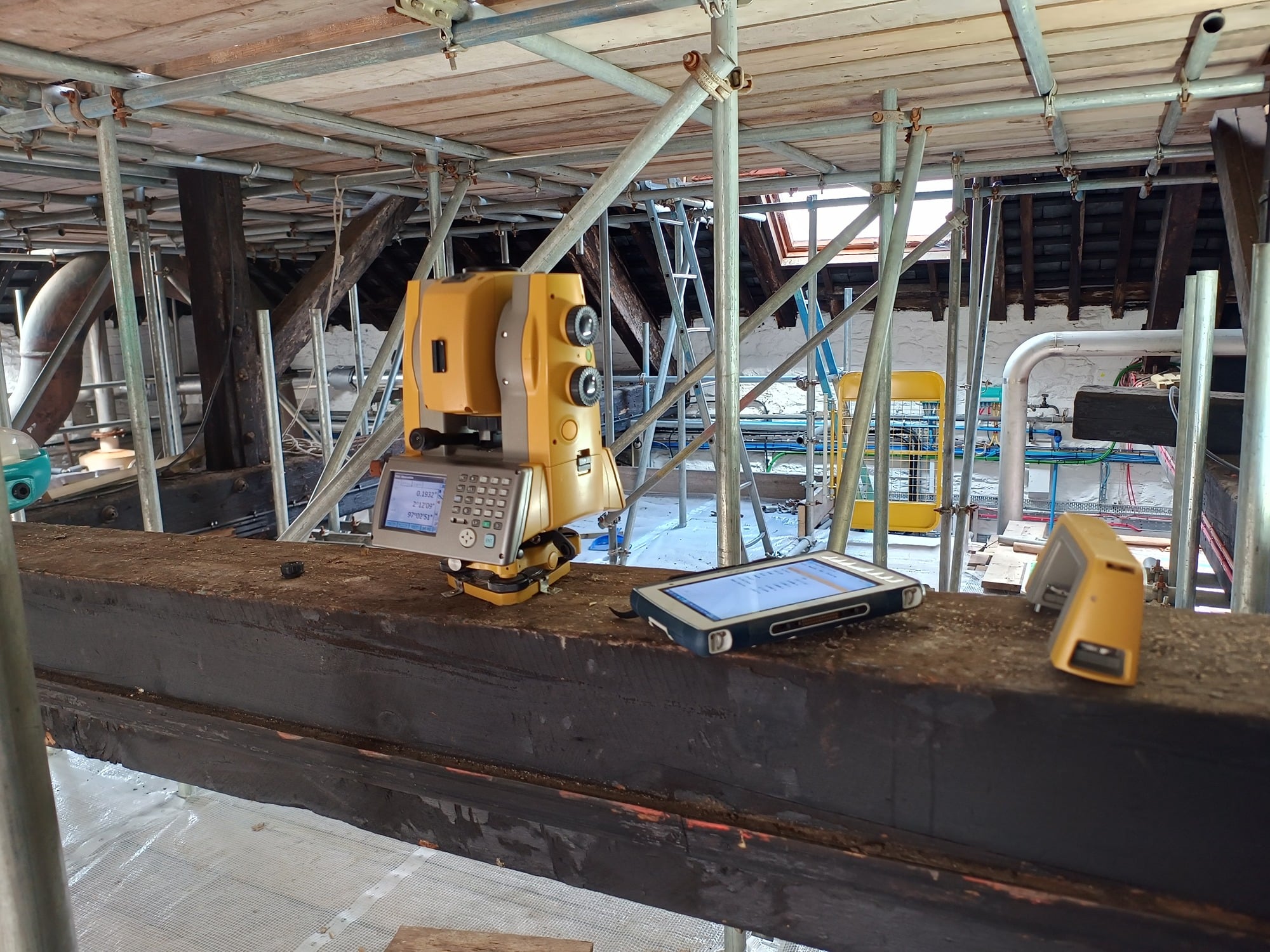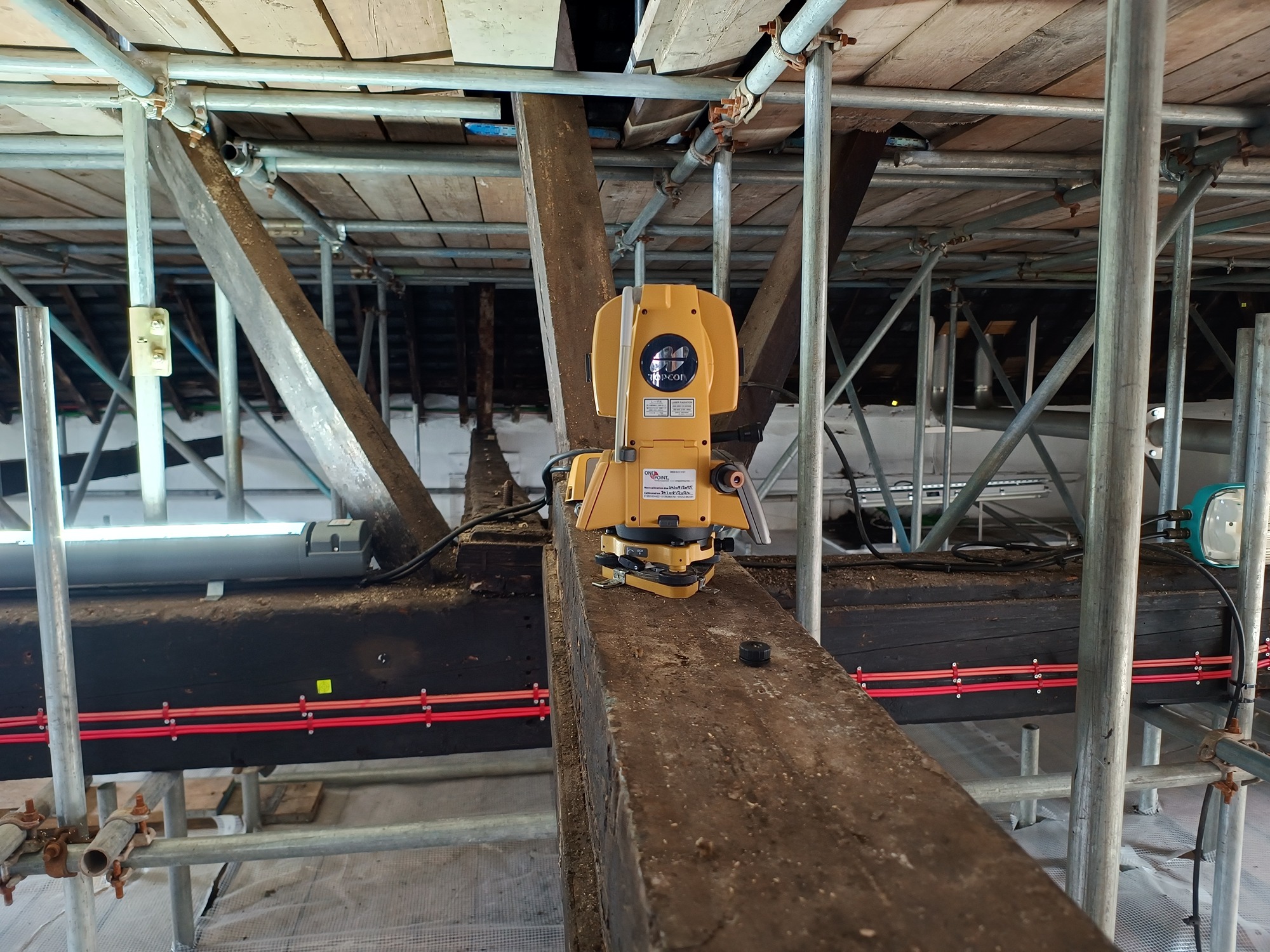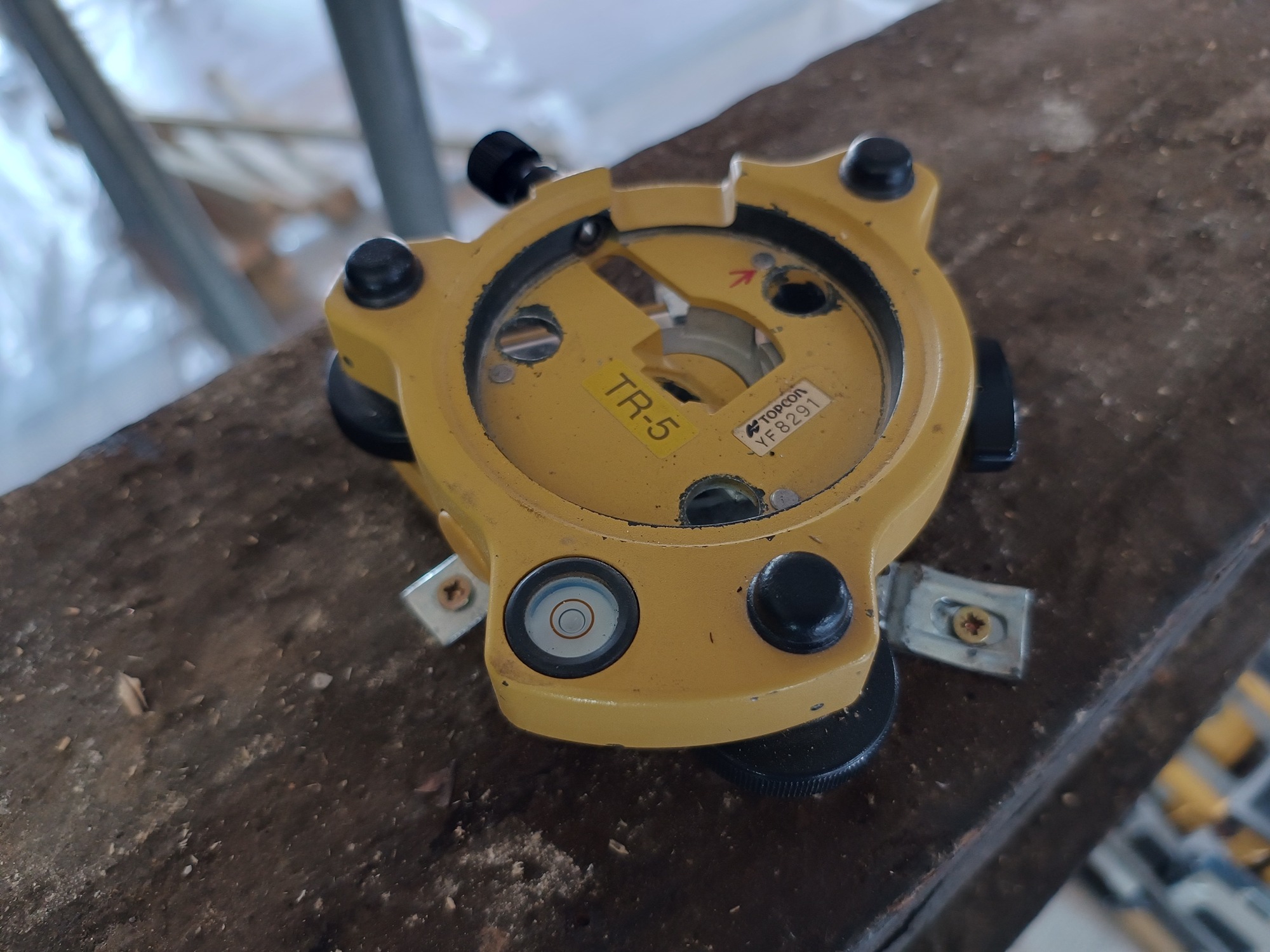Structural Deformation Monitoring in Cornwall & Devon
Measuring Structural Movement
Movement or deformation can occur in any structure over time. Sometimes it is expected, such as the settlement of a new tower block onto its foundations or sometimes unexpected, such as the subsidence of a house following a long dry summer. Movement can occur in any direction, frost heave in the winter on a building with shallow foundations can cause it to rise or the act of the sun in the summer and cold in the winter can cause a chimney to lean sideways as shown in the drawing on the right. It can be important to know if a leaning wall or chimney is stable, or if it is on the move and in danger of collapse.
Deformation monitoring points can be attached to the structure and then recorded over months or years in order to detect any progressive movement. There can be a big variation between readings taken in summer and winter due to thermal effects, so it is important to take readings at the same time of year if monitoring is to be carried out on a long term basis. Monitoring points are usually attached to the structure with glue, if the structure surface is sound, or screws and plugs if the surface is flaky or friable. Careful consideration is also given to survey control points to ensure accuracy, as these can move on a long term basis in addition to the structure if not installed properly.
Case Study - Monitoring an Old Roof
Structural monitoring needs to be thought through carefully. This job, to monitor for any movement inside a large timber roof, provided a bit of head scratching for half an hour or so after arrival on site. The whole space beneath the roof had been scaffolded and boarded out. There were no lines of sight from the ground and no stable platform to set up an instrument tripod on. The solution - to permanently mount a tribrach on a solid timber beam that sits in the middle of the roof. Survey control set up using retros on the perimeter stone walls to allow a resection on each visit in case the beam moves over time.
If you have a building or structure in Cornwall, Devon or Somerset that requires deformation monitoring, please get in touch.

